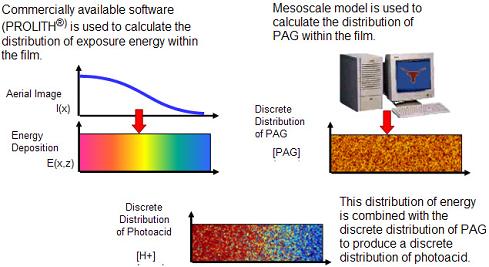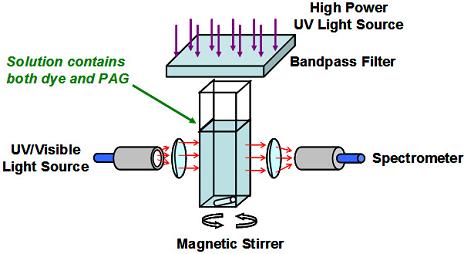Exposure
In most chemically
amplified photoresist systems, exposure generates acid catalyst molecules
which will react with the resist polymer in a later processing step to
change the solubility of the film in exposed regions. Several commercially
available software packages are capable of calculating the distribution of
absorbed exposure energy within the resist material. These calculations
can be performed for many different imaging schemes with arbitrary
patterns on the photomask. In our exposure simulations, we transform the
continuous distribution of energy that is calculated by this software into
discrete locations of exposure photoproducts.
|
|
The first step in the exposure simulation is to calculate the distribution
of energy within the resist film for the desired exposure conditions. We
perform this calculation using PROLITH® software (KLA Tencor). Next, this
distribution of energy is applied to the discrete distribution of
photoactive molecules that was calculated during the previous step. The
probability of reaction is calculated based upon the amount of energy
absorbed at a particular location and the quantum efficiency of the
molecule at that location. |
 |
| In order to calculate the response of the
photoactive species to exposure, the quantum efficiency of the reaction
must be known. We employ pH-sensitive absorbance and fluorescence dyes to
measure the amount of acid that is generated upon exposure of photoacid
generator (PAG) molecules. We are currently investigating a technique in
which both the PAG and the pH-sensitive dye are placed in solution.
Exposure is performed using a high power UV light source (either a mercury
lamp or an excimer laser) while the spectroscopic properties of the
solution are monitored. Preliminary experiments confirm that this
technique can be useful for rapid quantification of acid generation
efficiency. |
 |
| Next:
Post-Exposure Bake Module |


